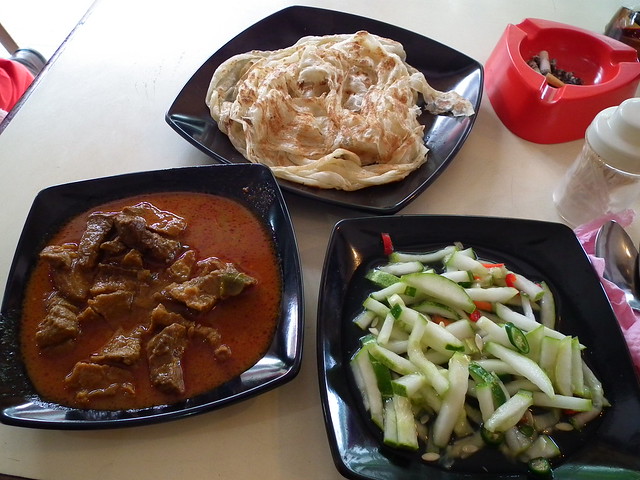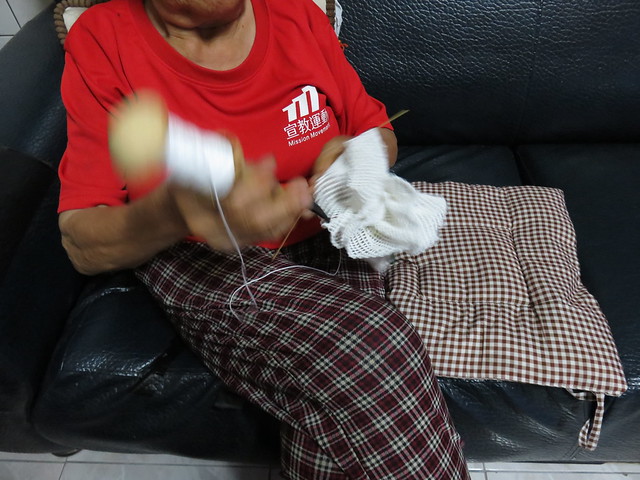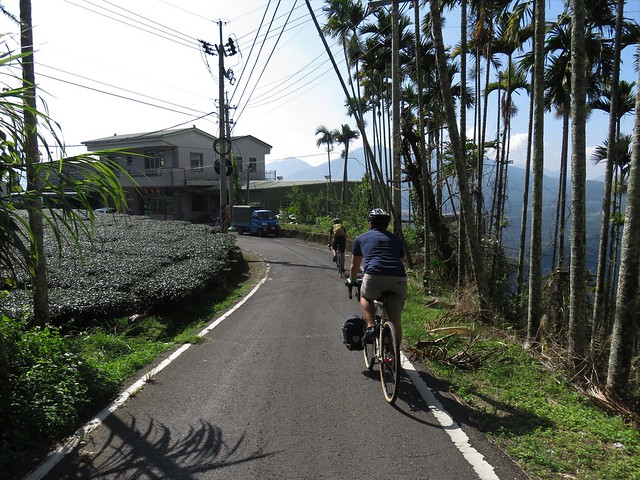Wednesday, November 28, 2018
Week 12. Land Use 2: Illegal factories
Illegal Factory Problem
http://english.cw.com.tw/article.do?action=show&id=15187
ANSWER IN A SENTENCE OR TWO. DO NOT COPY FROM THE TEXT. USE YOUR OWN WORDS.
1. What is the problem described in the article?
2. Why are so many illegal factories renting land zoned for agriculture?
3. Land use has a typical pattern of evolution, according to the article. What is it?
4. Why is there so much unused land in government industrial districts?
5. How can a tax help solve this problem?
============
Land Tax problem
http://english.cw.com.tw/article.do?action=show&id=11915&offset=0
Wednesday, November 21, 2018
Week 11 Asia Cement vs the Taroko People
Way Cool.... Austra-Asian DNA in ancient SA https://www.theatlantic.com/science/archive/2018/11/what-happened-after-people-first-arrived-americas/575335/?fbclid=IwAR32IkiMAQvmbjqnsNtkFnVtBL8Tb5poIqPRJrWxE0JQRlvVLBmjxyegUG0
Today's reading
https://www.culturalsurvival.org/publications/cultural-survival-quarterly/underside-miracle-industrialization-land-and-taiwans
1. Which aboriginal peoples owned the land of Asia Cement?
2. How did Asia Cement get the land from them, according to aborigine political activists?
3. What compensation did the aborigines receive for giving up their land? What jobs did they get?
4. What rights do aborigines have to their own land? What rights don't they have?
5. What happened when the aborigines tried to plant crops on the Asia cement land? Who was sent to stop them?
6. What are the advantages for big businesses if aborigines lose their land? See if you can think of two advantages, one about resources, one about labor.
For indigenous peoples, Taiwan’s transfer to Chiang Kai-shek’s Republic of China in 1945 was just a change from one colonial regime to another. (Chiu, 1999) In some respects, Chinese rule was worse than Japanese administration. Older Taroko people remember that even Japanese police officers learned the Taroko language in order to communicate with local people. The KMT, on the other hand, forced them to assimilate and conduct their lives in Mandarin. Ironically, the most significant space for the preservation of their language has been the Presbyterian and Catholic churches.
Older Taroko people also relate how their families were first relocated from the mountains to the foothills by the Japanese, and then from the foothills to the base of the mountains by the KMT. The forested mountains are now designated as the Taroko Gorge National Park, and it is illegal for Taroko people to hunt or fish in their traditional territory. They are now forced to live on narrow strips of land between the mountains and the sea, amidst cement quarries, cement factories, railroad tracks, and industrial parks.
Aboriginal Reserve Land
In 1968, the KMT government began legal registration of Aboriginal land in Taiwan as Aboriginal Reserve Land. Although indigenous people had lived on Taiwan for 6,000 years before the first Chinese settlers arrived, Aboriginal families received only cultivation rights under the new legal system. Usage rights on the land, moreover, were granted only on the condition that crops be planted for 10 years. The stipulation effectively forced assimilation on Aboriginal people, as it made them abandon their traditional mix of hunting, gathering, and slash-and-burn agriculture. It required that they instead adopt Chinese customs of settled agriculture, presumably for the growth of cash crops. The law stipulated that land could not be sold or rented to Chinese people--it either had to be cultivated or ceded to the government as state property.
Although Aboriginal Reserve Land was supposedly reserved for indigenous people, legal loopholes actually gave the Taiwanese government as well as Han Chinese individuals and corporations access to indigenous land. The government often "rented" indigenous land to outside commercial interests if indigenous people did not cultivate the land and sign "rental" agreements for the property in question. And indigenous people themselves often rented land to each other or outside Han Chinese. Han Chinese entrepreneurs were thus able to acquire space for villas, hotels, and factories on reserve land. The legacy of these problems remains. Indigenous people have no full legal ownership rights over the land, which means that they have no right to take out loans against it, a restriction that has prevented them from developing their own lands.
The policy of Aboriginal Reserve Land thus gave corporations adequate legal loopholes through which to seize Aboriginal land during a window of opportunity from 1968 to 1978. In 1973, the Taiwanese conglomerate Asia Cement applied to rent land from the Hsiulin Township Office and held its first consultative meeting with Taroko people. Township officials encouraged Taroko people to rent the land, saying it would give them employment opportunities, prevent out-migration of young people, and bring development to the community. The original landowners received compensation for displaced crops--a mere fraction of the land’s real estate value--and the promise that the land would be returned to them after 20 years.
Since Taiwan was under martial law from 1947 to 1987, there was no room for protest. The company did little to fulfill its promise of employing Taroko people. Although it had promised one job to each of the 100-some families ceding land, only 30 people actually got work doing low-level jobs as laborers, drivers, and machine operators. Many of them developed respiratory ailments from inhaling cement dust, and three have died of lung complications. By the 1990s, even those few dangerous jobs were being filled by migrant workers from Southeast Asia.
Fighting Back
Twenty years after the initial agreement, when some of the original owners tried to reclaim their land, they found that their property rights had mysteriously disappeared. Asia Cement claimed that the Taroko people had relinquished their rights to the property and that the company had the legal papers to prove it. They argued that the land was state property, and that they were renting it legally. But by this time, martial law had ended and the Taroko people were ready to fight back.
The Taroko were helped in their struggle by 58-year-old Igung Shiban. Shiban, trained as a midwife and beautician, had spent most of her adult life in Japan, but moved back to her Taroko community to vacation as her husband was recuperating from serious illness. When she came back home, she found that her father’s property rights had disappeared. With her help, the Taroko people organized the "Return Our Land Self-Help Association," sent petitions to the county government, and brought suit to court. (Shiban’s Japanese husband, Mr. Maruyama, has supported her financially and emotionally throughout her efforts. He has also helped her write legal documents.)
One lucky day for the Taroko people, township officials left a hearing in anger, leaving behind a stack of documents. As Igung Shiban looked through them, she found that they were filled with irregularities. Some were missing dates or official seals. Most suspicious of all, the signatures of many former owners who had supposedly given up their property rights were all written in the same handwriting. In nearly a year of research, she pulled the agreements, one by one, from the township office files and showed them to the signatories to confirm whether or not they had actually signed them. It turned out that most of the signatures on the agreements to relinquish land rights were forgeries.
Asia Cement resorted to intimidation to stop her research--Shiban and her husband were physically attacked twice, and her husband was burned on the leg—but they didn’t give up. Fortunately, local environmental activists and National Legislator Bayan Dalur, an indigenous representative given a seat through the opposition Democratic Progressive Party (DPP), helped them pursue the case by providing access to government documents.
In 1997, Igung Shiban herself ran for township council representative as a DPP candidate. The KMT, however, nominated her brother’s wife as their candidate to split the loyalties of her clan group. Asia Cement also threw their financial resources into the campaign, bribing Taroko people as much as NT$10,000 ($300) to vote for the KMT. In a community with high unemployment and low family incomes, the temptation was difficult to resist. Still, Shiban lost the election by only 50 votes, a result that revealed her strong support in the community. Asia Cement also tried to manufacture consent within the community through financial support of Taroko cultural activities. Most notably, they helped Igung Shiban’s younger brother Jimi Shiban (an Asia Cement employee) collect and exhibit photos of elderly Taroko people with facial tattoos. Their support for cultural preservation, although certainly important from an anthropological perspective, has further divided the Taroko people.
Igung Shiban has continued her struggle for her ancestral land in both the courts and in other venues. In 1998, she presented a report on Taroko land struggles to the United Nations Working Group on Indigenous Populations. And she gained the support of some journalists; Taiwan’s "Super TV" even made a documentary film on the Taroko struggle. In August 2000, the Taroko people finally won cultivation rights in court, partly due to pressure on their behalf from Yohani Isqaqavut, chair of the Executive Yuan Council of Aboriginal Affairs. On September 4, 2000 the Taroko were able to enter their land for the first time in 27 years. They celebrated the event with a traditional ceremony in commemoration of their ancestors.
The struggle is not yet over. In March 2001, conflict broke out when Asia Cement sent foreign workers to prevent Taroko farmers from planting crops. A journalist was injured in the violence that ensued. Taroko people have planted crops several times since then, but Asia Cement responded by removing the young plants from the ground. The company is hoping that intimidation will prevent the Taroko people from cultivating the land, a precedent that will eventually be recognized as a legal abandonment of the property. Though the Taroko people continue to lobby for enforcement of the rights they earned in court, they lost an important ally during the 2001 elections when Bayan Dalur was defeated in his campaign for re-election to the national legislature.
Only the Tip of the Iceberg
The struggle for Taroko land rights is only the tip of the iceberg. Indigenous villages have been relocated without consent to build the Hualien airport. Both the Tayal tribe of Taoyuan County and the Rukai tribe of Taitung County have lost lands to dam construction. Throughout Taiwan, indigenous land has been expropriated by the Retired Servicemen’s Association, by the Forestry Department, and for the construction of national parks. Indigenous peoples have clearly suffered more than any other ethnic group on Taiwan from colonization and development.
=========================================https://international.thenewslens.com/article/84693
""According to an October 2017 report by Taiwan Business Topics, "Taiwan’s modern cement industry dates back to the establishment of the Taiwan Cement Corp., formed as a state-owned company in 1946 and privatized in 1951 under the leadership of the Koo (辜) family. For decades it was considered one of Taiwan’s blue-chip companies. ACC was formed in 1957, as part of the giant Far Eastern Group, and moved most of its production from its original site in Hsinchu, northern Taiwan, to the east coast in 1973, at the government’s urging. Currently, all of Taiwan’s cement mines and more than 80 percent of cement production is located on the east coast.....
....Whether or not there was skullduggery in the past, there was certainly suspicious activity in March 2017, when ACC submitted its operations renewal application. Huang explained how the approval review process usually takes about 15 months, but the go-ahead was granted in just over three months. She and others said that while no laws were violated, this expedited renewal process is very unusual.
Huang said that by the end of 2016 there were a number of mining companies whose operations permits were up for renewal. Nine of these companies proposed a draft of the new mining laws that perpetuate a status quo with minuscule changes.
She said that no environmental impact assessment has ever been done for ACC. Huang also stressed that this mining area is "environmentally sensitive" and is prone to landslides and other environmental risk phenomena. She also noted that the national mining laws governing ACC date from the 1930s and do not reflect modern concerns and needs.
"The company says it is operating safely, and that the overall environment is safe," said Huang. "Yet it still refuses to do an environmental impact assessment. Why?" She added that locals were forced to move down from their homes on the mountain and are in constant danger. "Regardless of everything, this is still a geologically sensitive area," she said. "The local people are losing their land, and it’s getting ever more dangerous for them. They want transparency. While mining laws are receiving attention, the government is facilitating this company to get a new permit."
Huang said that though everything regarding the permit extension seems legal, the company did not adhere to the Indigenous Basic Law. This is the main issue.""""
Thursday, November 8, 2018
Wednesday, November 7, 2018
Week 9:US midterms and review
Just for fun:
US midterm election
1. https://www.taiwannews.com.tw/en/news/3570563
2. https://www.bbc.com/news/world-us-canada-46076389
3. https://www.cnbc.com/2018/11/07/midterm-elections-not-seen-impacting-us-china-trade-war.html
3b. https://www.bloomberg.com/news/articles/2018-11-07/u-s-midterm-voters-sent-china-a-surprising-trade-war-message
4. Understanding the media: https://www.nytimes.com/2018/11/07/us/politics/sessions-resigns.html
REVIEW TIME, ZOMBIES
Midterm week 10, will be ABCD, choose 1. Covers everything in this blog and everything I have talked about in class.
Subscribe to:
Posts (Atom)


